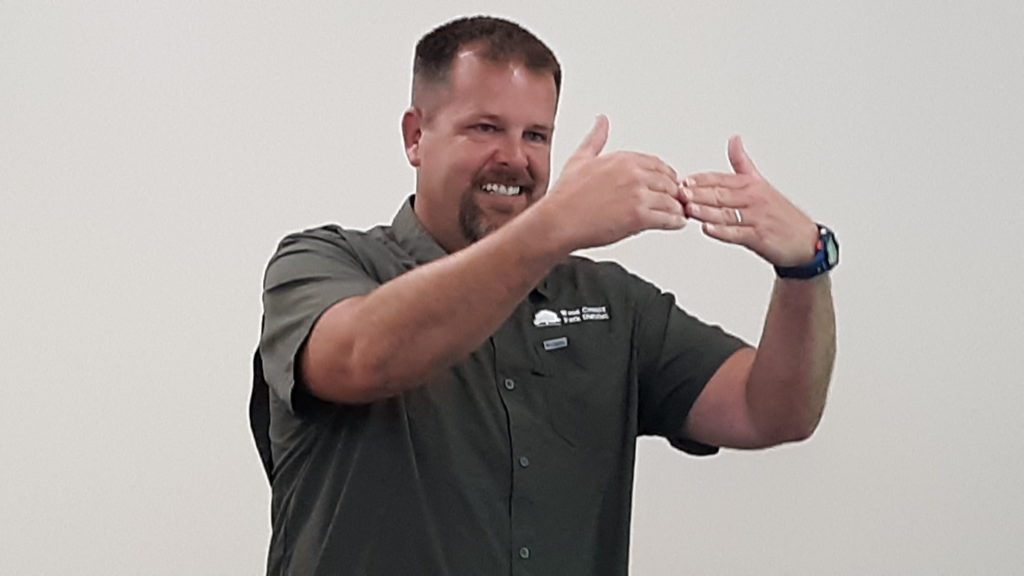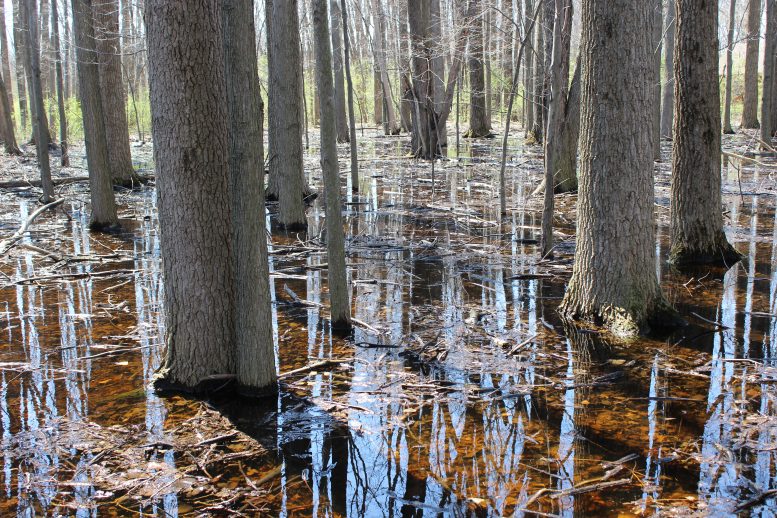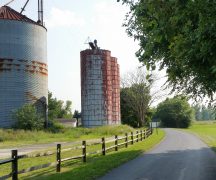By JAN LARSON McLAUGHLIN
BG Independent News
Two centuries ago, Wood County was a wretched place covered with black water, black soil and black swarms of biting bugs.
As towns popped up across Ohio, settlers avoided the Great Black Swamp like the plague.
“It was miserable,” Bill Hoefflin, senior program naturalist with the Wood County Park District, said during his talk at Bowling Green Kiwanis Club last month.
This region was “dark and scary,” with clay soils that didn’t allow drainage of water, and trees measuring 120 feet tall and 40 feet around, he said. Double and triple layers of tree canopies that didn’t let the sun in. There were clouds of insects that carried disease.
“It slowed everything,” while other areas of Ohio were being tamed by white people, Hoefflin said. “This was the last area to be settled.”
The Great Black Swamp was so formidable, that Algonquin and Iroquis did not lay claim to the land.
“No tribes wanted to live there. It was a rough place to live, even on the edge,” Hoefflin said.
The footprint of the impregnable swampland had been made thousands of years before, when the region was covered by a sheet of ice.
“If you’ve ever wondered why Wood County is flat as a pancake, it’s because there was ice about a mile thick” bulldozing any variations in the landscape, Hoefflin said. “Wood County was pretty much completely in the swamp.”
Those glaciers retreated from the region about 9,000 to 14,000 years ago – leaving behind Lake Erie, clay soil that doesn’t drain well, and depositing sand ridges throughout Wood County.
“You end up with a swamp,” similar to today’s Everglades, stretching 140 miles long from Fort Wayne, Indiana, to Lake Erie, Hoefflin said.

At one point, this region was home to large mammals like woolly mammoths, mastodons, giant beavers measuring 9 feet long, ground sloths up to 12 feet tall, musk ox and dire wolves, Hoefflin said.
When Ohio became a state in 1803, forests accounted for 95% of the state’s acreage. It was said that squirrels could travel from Indiana to Pennsylvania, and from Michigan to Kentucky, hopping from tree to tree, without having to touch the ground, Hoefflin said.
The state was populated by mountain lions, elk, martens, black bear, bison and bobcats.
As white settlers spread across Ohio, state leaders gave Native American tribes the Great Black Swamp region. They neglected to tell the tribes that the same lands had already been promised to veterans of the American Revolutionary War.
When soldiers came to the region during the War of 1812, they encountered difficult conditions. But some saw the potential of the swampland.
“A few of those soldiers saw this dark black soil,” Hoefflin said. They realized that the land could be very productive – if it could be drained.
“People start eating away at the swamp,” Hoefflin said. “The soils here are a challenge, but it’s very fertile if you can drain it.”
But drainage efforts were haphazard, with landowners digging ditches that drained onto neighbors’ land.
“There was no system. It was chaos,” he said.
To create order, Ohio passed drainage laws, requiring ditches to be dug on the south side of east-west roads, and on the west side of north-south roads. The ditches sent the water toward Lake Erie.
Tiles were buried in fields, to keep farmland from returning to swampland. Wood County, Hoefflin said, has more underground drainage tile than almost anywhere else – enough to stretch to the moon.
Even today, landowners know the Great Black Swamp is “always lurking,” waiting to cover acreage if tiles aren’t replaced every so often, Hoefflin said.
Ohio has also undergone many transitions during its two centuries as a state, he said. By the early 1900s, the forests that covered 95% of the land had shrunk to just 14%, he said.
Much of the wildlife that once were found in Ohio had disappeared. Deer, turkeys and otters could no longer be found in the state.
“Environmental disasters were popping up everywhere,” Hoefflin said. “Lake Erie was dead.”
But then in the 1970s, a national environmental movement helped Ohio regain some of its forests and fauna. Under the leadership of President Richard Nixon – an unlikely ally of the environment – legislation was signed creating the EPA, Clean Water and Clean Air Acts. Regulations were adopted for natural resources and hunting.
“We turned it around,” Hoefflin said. “Since then, it’s been a sustained movement.”
Forests are being protected, and wildlife has returned, including black bear, coyotes, turkeys, deer and otters.
“People value having green space and having wildlife habitat,” he said.





